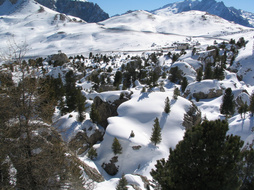How should extended fields of boulders (blockfields and similar formations) be tagged? A prominent example would be the so-called "Felsenmeer" (stone sea) in the Odenwald region in Germany, but you can find such fields at a smaller scale in many other places. Possible tags and why they don't really work:
Is there another tag for this that would fit better or am I missing something else? asked 27 Mar '22, 18:02 smheidrich edited 30 Mar '22, 11:19 |
2 Answers:
There is very limited usage of
Specific examples of the phenomenon (not necessarily mapped as such):
answered 01 Apr '22, 23:42 SK53 ♦ edited 02 Apr '22, 13:25 |
This recently came up in another forum and I did some checking between what's posted here and there. Similar references to Felsenmeer and terrain such as that. Short answer is natural=blockfield. answered 24 Jan '24, 04:45 cactolith |

